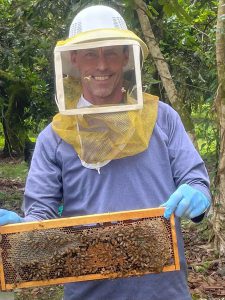September Report
We have the USDA NASS Colonies report this month on colony losses, stressors and such (see Where The Girls Are) and we know there are, essentially three groups that work to report and analyze such data. BIP has their annual survey of colony losses for winter and summer, USDA NASS has their survey done quarterly on losses, and, yes, we have our survey, taken annually, looking at Winter and Spring losses, Spring and Summer honey crops, an overview of Summer weather and just to make it interesting, queen replacement numbers for Spring and Summer. When looking at Winter losses, it’s tough to compare apples to apples for these three surveys since our timelines are different. You can check out the BIP data at https://beeinformed.org/results-categories/colony-loss/ that show an overall winter loss of 30%. This quarter’s USDA NASS report, https://usda.mannlib.cornell.edu/MannUsda/viewDocumentInfo.do?documentID=1943 shows winter loss at between 15 – 16%. Following is Bee Culture’s winter loss data, by region.
Region 1 – 40% loss; Region 2 – 28%, Region 3 – 17%, Region 4 – 17%, here’s the kicker, Region 5 – 50%, Region 6 – 37% and Region 7 – 54%. Taken overall, our Winter loss data comes to 35%. So take your pick, depending on where you live. How did you do this Winter?
Summer loss, so far this year, hasn’t been measured by BIP but will be soon, and the USDA NASS data indicate a 10% loss between April and June. We measured April through July, and our Summer losses, by region are; Region 1 – 3%, Region 2 – 4%, Region 3 – 5%, Region 4 – 3%, Region 5 – 6%, Region 6 – 10% and Region 7 – 6%. Overall Summer losses were – 5.3%, almost half of the USDA NASS numbers. So, our reporters had about twice the Winter loss of the USDA survey and just a tad over the BIP Winter loss data. Recall, the timelines of what’s Winter, what’s Summer are different so that will affect the data of each survey.
Overall, the Summer crop this year is average to just below average across all regions, so you would expect a typical crop this Fall, hopefully above the 147 million pound crop of last season. Finally, one of the most troublesome issues of management lately has been queen losses, for a multitude of reasons. We asked about queen replacement so far this season because of failure, not because they simply wanted to. 75% of our reporters have replaced 10% or fewer of their queens so far this season because of failure. That is an encouraging number, and we hope it continues.










